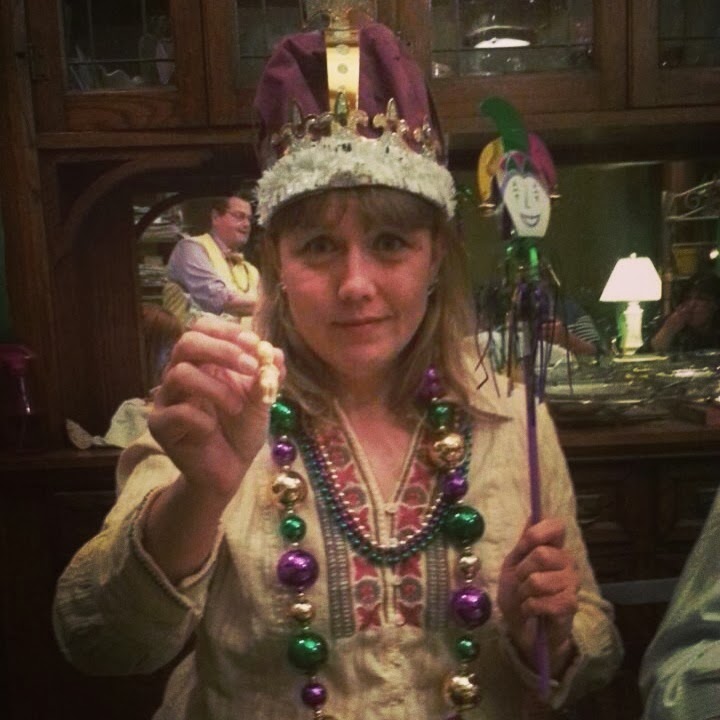MARDI GRAS TRADITIONS
Every year I host a Mardi Gras dinner for my friends. Although, I’ve never been to New Orleans, or anywhere else that celebrates Mardi Gras or Carnival, this tradition has quickly become one of my favorite events.
The "King's Cake" waiting for someone to find the baby inside.
Dinner guests are starting to arrive.
In addition to having to rid our pantries of all decedent and tasty treats before the fasting weeks of Lent (Mardi Gras literally translates to Fat Tuesday, a name chosen for this reason), part of what I like about this celebration, is that it provides some lighthearted frivolity and fun during what can be a very long and cold winter – especially this year in Minnesota. Mardi Gras allows us to escape that in spirit at least.
My green block optic depression glass dishes were perfect for my dinner.
While many of us know most of the traditions of Mardi Gras, few of us know their origins. I’d like to take a few moments to explore some of those traditions with you.
Wearing Masks
Masking wearing has long been an integral part of Mardi Gras. In fact, masks and masquerade parties have served an important purpose for centuries – they provide anonymity. This anonymity allowed people to escape the restraints of class and culture for a few hours or a few days, and gave them the freedom to behave in ways they would not be allowed to in their daily lives. People were able to be whomever and whatever they chose to be. Today the masks allow us to mixed with people from a variety of backgrounds in a fun and exciting way.
Mardi Gras glitter.
The Flambeaux
The Flambeaux (the name means flame-torch) are the torches that are carried through the streets by the revelers. Originally these were made from shredded rope that was soaked in pitch and then set ablaze and carried about after dark so that the celebration could continue late into the night. Originally, these were carried by slaves, and later by free African Americans eager to earn the coins that were thrown at them from the crowd.
Mini Flambeaux.
Throwing Beads
The beads are probably the best known of all of the Mardi Gras traditions. The colors were determined in 1872 by the king of the first daytime Carnival – purple for justice, gold for power, and green for faith. Originally people would throw each colored bead set at the person who they felt exemplified that color’s meaning. Eventually, this tradition evolved to our current practice of throwing beads of all different colors at everyone, and not just people who represent justice, power and faith. Also, contrary to some thoughts, we do not have to bare our breast to get beads.
You can never have too many beads.
The King of Carnival
In New Orleans, a new King of Carnival is crowned each year. His name is Rex and this tradition dates back to 1872. According to history and legend, the first King Rex was actually the Grand Duke Alexis of Russia. The Grand Duke, a friend of General George Armstrong Custer, was visiting the United Sates on a hunting trip. During this visit, in a move that businessmen hoped would bolster their economy and tourism, he was invited to New Orleans and crowned King of Carnival. Every year since, a new King has been chosen from among the prominent people of New Orleans.
My friend Cynthia found the baby in the cake
to become Queen of my Mardi Gras dinner!
As you can see, our current Mardi Gras practices have some wonderful historical origins that add to the fun and excitement that continues on for us today.
HAPPY MARDI GRAS EVERYONE!!!
(My friends Marisa Myhre and Mike Beck also contributed photos to this post)








No comments:
Post a Comment